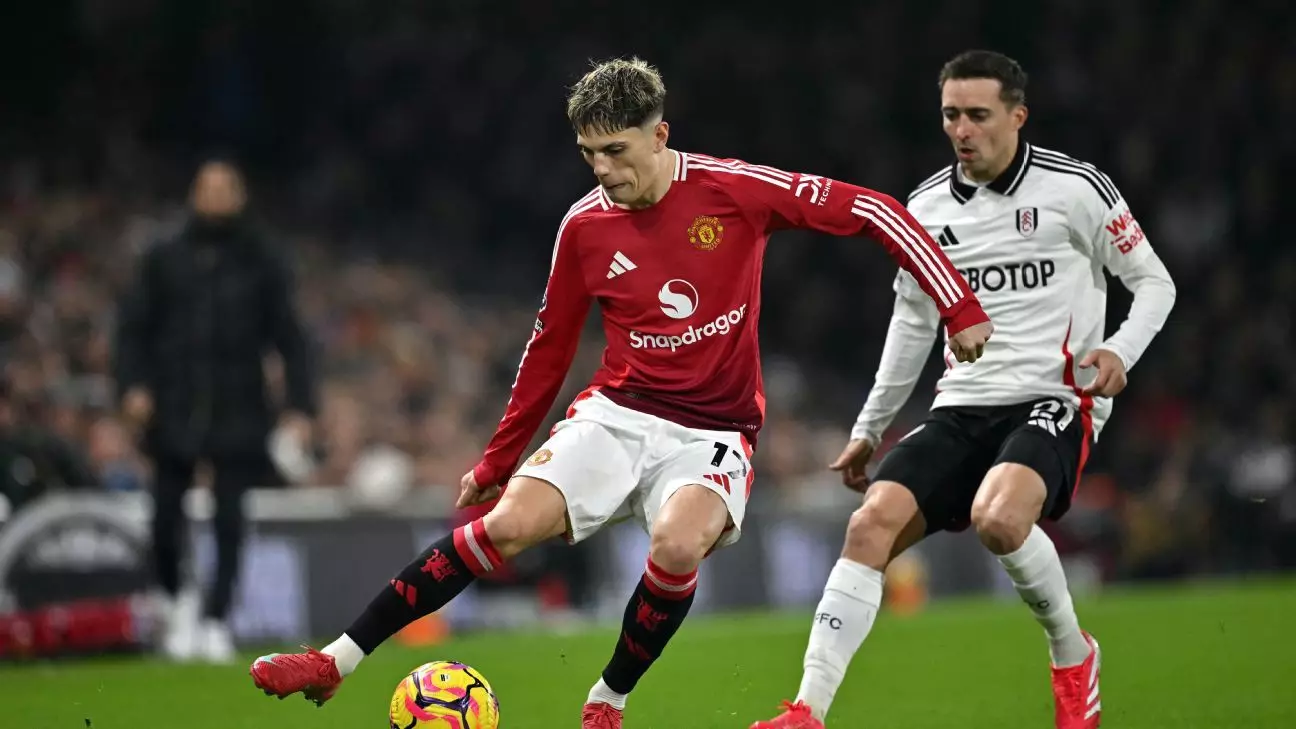In the ever-demanding arena of professional football, players often encounter formidable challenges that define their careers. For Alejandro Garnacho, a promising winger, the journey has been anything but straightforward. Following a notable omission from the squad during a crucial match against Manchester City, the young talent faced significant scrutiny. However, Garnacho’s adaptability and determination to reclaim his position on the team have sparked discussions about his potential and future at Manchester United.
Ruben Amorim, the head coach of Manchester United, has openly acknowledged Garnacho’s transformation in recent weeks. The winger’s evolution has been marked by a renewed focus on his performance, which the coach attributes to Garnacho’s commitment to self-improvement. Unlike another academy graduate, Marcus Rashford, who continues to grapple with external pressures and criticism, Garnacho has managed to turn the tide in his favor. His recent contributions during the 2-0 Europa League victory over Steaua Bucharest have exemplified this shift, highlighting his importance to the squad.
Amorim’s comments reflect a broader understanding of the coach-player dynamic, emphasizing the need for adaptability and response to coaching styles. While Rashford struggles to align with Amorim’s expectations, Garnacho appears to thrive, recognizing the coach’s intent to foster growth and competitiveness. This divergence between the two players sheds light on the complex nature of team dynamics, particularly how individual attitudes can influence overall performance and morale.
As Garnacho’s form improves, speculation surrounding his future intensifies, with clubs like Napoli and Chelsea reportedly interested. This interest has been exacerbated by Manchester United’s operational constraints concerning sustainability and profitability, which have led to questions about whether the club might part ways with rising talents. However, both Garnacho and another young player, Kobbie Mainoo, have demonstrated their worth on the pitch, potentially reshaping the club’s strategy concerning youth development and retention.
Amorim’s vision for the team transcends immediate results; he envisions a pathway for younger players to ascend the ranks of the club. The emphasis on nurturing homegrown talent underscores a broader trend in modern football, where clubs increasingly rely on academy graduates to meet both sporting and financial objectives. The success of Garnacho and Mainoo reinforces the argument that investing in youth not only addresses immediate team needs but also mitigates future transfer market pressures.
As Manchester United navigates a complex period of performance and player management, Alejandro Garnacho’s journey stands out as a prime example of resilience, adaptability, and the immense potential that lies within academy systems. The collaborative effort between player and coach fosters an environment conducive to growth, promising a bright horizon not just for Garnacho but also for the future of Manchester United’s youth program. As fans watch closely, it is clear that Garnacho is poised to play a pivotal role in the club’s ambitions, reflecting the enduring spirit of a generation of young talent ready to shine.


Leave a Reply